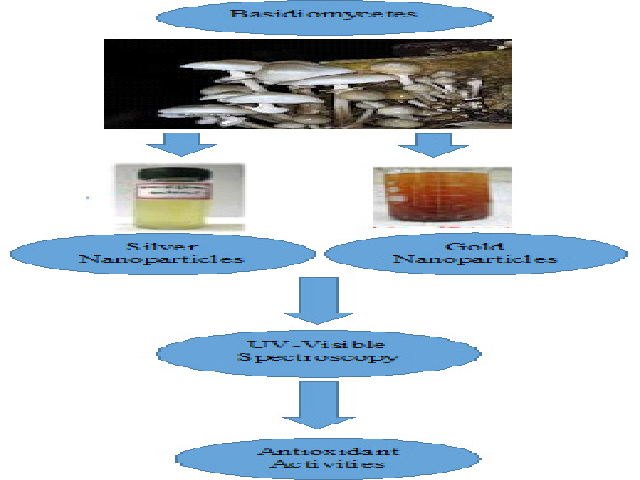Antioxidant Assay of Gold and Silver Nanoparticles from Edible Basidiomycetes Mushroom Fungi
DOI:
https://doi.org/10.5530/fra.2017.2.20Keywords:
Flavonoid, Tannin, FRAP, ABTS, DPPH, Free RadicalAbstract
Background: In recent years, nanotechnology research is emerging as cutting edge technology interdisciplinary with physics, chemistry, biology, material science and medicine. AuNPs and AgNPs are an important class of nanomaterial for a wide range of biomedical applications. Synthesis of AuNPs and AgNPs through biological route is preferred due to its environment-friendly and economic aspects. Mushrooms have been known for their nutritional values and used as medicines by humans for ages. In modern terms, they can be considered as functional foods which can provide health benefits beyond the traditional nutrients. The present study demonstrates an eco-friendly and low-cost method of biosynthesis of AuNPs and AgNPs using basidiomycetes mushroom fungal strains. Materials and Methods: The antioxidant potential of the basidiomycetes mushroom fungal strains was analysed by total flavonoid content, FRAP assay, ABTS assay, Metal chelating activity, Phosphomolybdenum assay, Assay of superoxide radical scavenging activity, Free radical scavenging activity on DPPH along with the determination of total phenolic and tannin contents in the mushroom mycelial extracts. Results: The synthesized gold nanoparticles (AuNPs) silver nanoparticles (AgNPs) were confirmed by the colour transformation and Ultraviolet-visible (UV-visible) spectroscopy. These biologically synthesized AuNPs and AgNPs were tested for antioxidant activities. The biosynthesized AuNPs and AgNPs showed significantly higher antioxidant activity. Conclusion: The present study explored that the mushrooms which are efficient producers of AuNPs and AgNPs, and could act as safe and cost-effective with potential antioxidant activities. These findings encourage studying these fungal strains further for their potential biological applications.
Downloads
Metrics





